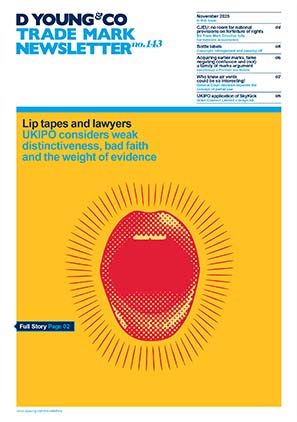Not an easy win: easyGroup loses infringement claim and EASYOFFICE trade marks
A legal battle spanning two decades reaches an end, as the Court of Appeal issues its decision on whether the use of EASY OFFICES infringed easyGroup’s registered rights in EASYOFFICE.
Background
The appellant, easyGroup Limited, owned various trade mark registrations for the mark EASYOFFICE (both word and figurative), in the UK and EU, for services in classes 36 and 43, which broadly covered the rental of office spaces. Since 2000, the respondents, Nuclei Limited and others, had brokered serviced office spaces under a brand called EASY OFFICES. easyGroup sued Nuclei for trade mark infringement in accordance with section 10(1) of the Trade Marks Act 1994 (identical mark for identical goods/services), and section 10(2) of the Trade Marks Act 1994 (likelihood of confusion). Nuclei counterclaimed for revocation of the easyGroup’s trade marks on the basis that the easyGroup had not made use of them.
First instance
The first instance judge concluded that Nuclei had not infringed easyGroup’s EASYOFFICE marks. First, the judge found that the services covered by the trade mark registrations were different to those provided by Nuclei, so the section 10(1) of the Trade Marks Act 1994 claim failed. The judge also found that there was no likelihood of confusion, and she particularly relied on the fact that there was an absence of evidence of confusion, noting that the parties had been trading side by side for five years. Even if there was confusion, the judge held that such confusion should be tolerated given the honest concurrent use by Nuclei. Thus, the section 10(2) of the Trade Marks Act 1994 claim also filed. Finally, in relation to the revocation counterclaim, the judge found that easyGroup had not sufficiently proven a real commercial exploitation of the EASYOFFICE registrations, and so the revocation claim succeeded.
Trade mark infringement
Dealing with the section 10(1) of the Trade Marks Act 1994 claim first, L J Arnold found that the services provided by Nuclei were identical to the services covered by easyGroup’s registrations. However, he considered that the marks EASYOFFICE and EASY OFFICES were different. In a section 10(1) of the Trade Marks Act 1994 claim it is not a matter of whether the marks are confusingly similar, but rather whether the differences between the marks would go unnoticed. The marks differed visually and aurally, as EASYOFFICES had an additional letter and an additional syllable and the marks were conceptually different, in that EASYOFFICES was plural rather than singular. Such differences would not go unnoticed by consumers.
Turning to the section 10(2) of the Trade Marks Act 1994 claim, easyGroup argued that the judge had failed to recognise that there had been relatively little opportunity for confusion to occur. However, L J Arnold stated that the judge’s overall assessment as to the likelihood of confusion was one that was open to her, and she was entitled to find that, given the long period of honest concurrent use and the lack of evidence of actual confusion, there was no infringement. The judge clearly took the view that confusion should have been relatively straightforward to detect given the online nature of both businesses, and that such evidence would have emerged during the long period when the two businesses had traded side by side.
Revocation
In its appeal, easyGroup argued that the judge should have found that there was use of the trade marks, and that the judge’s approach amounted to penalising easyGroup for the previous success of easyOffice, when it should have counted in its favour. L J Arnold disagreed, and confirmed that the judge was correct to find that there was insufficient evidence of use. He noted, in particular, that advertising evidence alone would rarely be sufficient to constitute genuine use of a trade mark. Further, easyGroup had not adduced any evidence as to the numbers of visitors to its website or the numbers of page views. As easyGroup is an experienced operator it should have been more than able to prove genuine use of its trade marks.
In short
This case is a reminder that the Court of Appeal will take into consideration the absence of confusion evidence when considering a likelihood of confusion. If there has been co-existence for an extended period it may be an uphill battle to convince judges that an infringement has occurred. The case also highlights the importance of collating sufficient evidence of use, which includes sales data, website visits, and viewership details, as advertising evidence alone will rarely be enough to convince judges that you have used your trade mark.
Case details at a glance
Jurisdiction: England & Wales
Decision level: Court of Appeal
Parties: easyGroup Ltd v Nuclei Ltd & Ors
Citation: [2023] EWCA Civ 1247
Date: 27 October 2023

